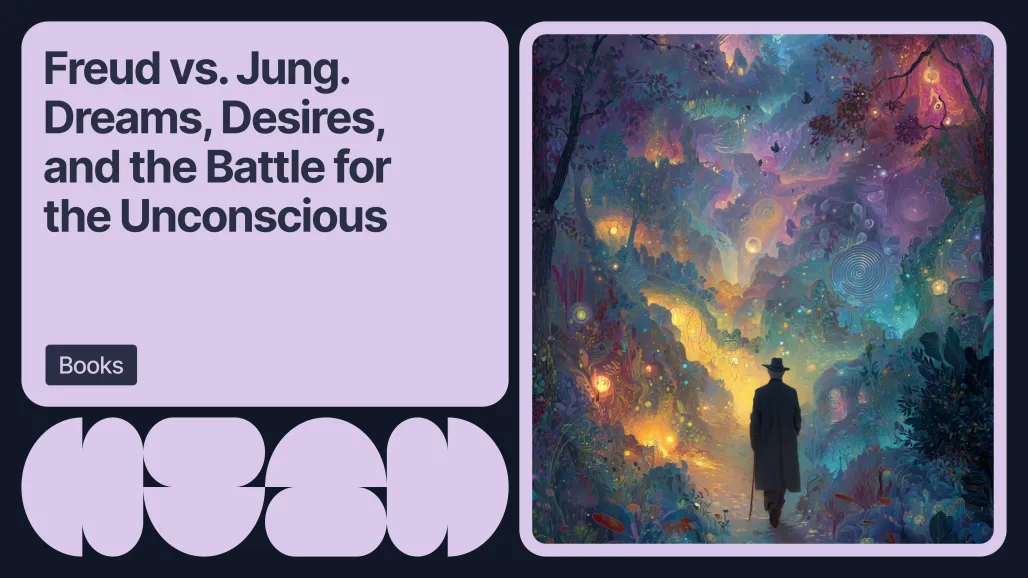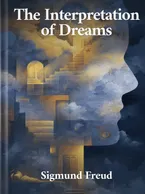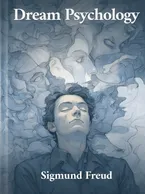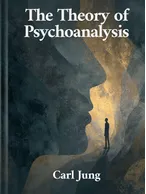Freud vs. Jung. Dreams, Desires, and the Battle for the Unconscious

Freud and Jung explored the unconscious mind. They agreed on dreams, disagreed on meaning—but both shaped how we understand ourselves.
Freud and the Birth of Psychoanalysis
The Interpretation of Dreams
Civilization and Its Discontents
Carl Jung and the Expansion of the Unconscious
Psychology of the Unconscious
Theory of Psychoanalysis
Freud and Jung: What They Shared and Where They Split
What Happened to Psychoanalysis?
Final Thoughts
Psychoanalysis is one of the most fascinating—and sometimes confusing—ideas in the world of psychology. It’s the study of the unconscious mind: the part of our thoughts, memories, and desires that we’re not fully aware of, but that still influences how we feel and act.
It was Sigmund Freud, an Austrian neurologist in the late 1800s, who founded psychoanalysis. He believed that many of our problems, fears, and emotions come from deep within, often from early childhood or hidden thoughts we've pushed away.
Freud was also the first to create the concept of talk therapy—what we now call a psychoanalytic session. It was a revolutionary idea: that just talking could uncover hidden emotions and lead to healing.
Later, other thinkers followed Freud—some supported his ideas, others challenged them. The most famous of them was Carl Jung, who started as Freud’s student and collaborator but eventually became his greatest rival.
In this article, we’ll look at their key ideas, their books, how they shaped psychology—and how they eventually parted ways.
Freud and the Birth of Psychoanalysis
Freud’s big idea was this: we’re not as in control of ourselves as we think. Underneath our everyday thoughts are powerful hidden forces—wishes, fears, desires, and memories—that shape how we behave.
He divided the mind into three parts: the id (instincts and desires), the ego (the realistic part that deals with the world), and the superego (moral conscience). Much of our inner conflict comes from these forces clashing inside us.
Freud believed that by uncovering these hidden parts of the mind—especially through dreams, slips of the tongue, and free association—we could better understand ourselves and begin to heal from emotional pain.
The Interpretation of Dreams
In this groundbreaking book, Freud argued that dreams are not random or meaningless. He believed they were disguised expressions of unconscious wishes, often linked to repressed childhood desires.

Through careful interpretation, Freud believed we could decode what the mind is trying to tell us.
This book laid the foundation for many of Freud's later theories—and made dream analysis a central tool in psychoanalysis.
Civilization and Its Discontents
In this later work, Freud moved from the personal mind to the larger world. He asked why modern humans, despite having comfort and progress, often still feel unhappy or anxious.
His answer was that society requires us to suppress our basic instincts, especially aggression and sexual urges, in order to live peacefully with others.
Freud argued that this constant inner struggle—between what we want and what is socially acceptable—leads to guilt, anxiety, and internal conflict, which civilization cannot fully resolve.
This book shows Freud’s belief that psychology isn't just about individuals—it's also about how we fit into society.
Carl Jung and the Expansion of the Unconscious
Carl Jung began his career as Freud’s close ally, but he quickly developed his own ideas. While Freud saw the unconscious mostly as a place of repressed desires, Jung believed it was also a source of creativity, insight, and spiritual depth.
Jung didn’t deny that people struggle with hidden fears or desires—but he saw the unconscious as more than just a psychological basement. He viewed it as a dynamic space with the potential for growth and transformation.
Psychology of the Unconscious
In this book, Jung presented his idea of the personal and collective unconscious. The personal unconscious is made of forgotten or repressed memories, much like Freud’s model. But the collective unconscious, Jung argued, is inherited and shared across all humans.

This collective layer includes archetypes—universal symbols or characters that appear in myths, dreams, and cultures all over the world, such as the Hero, the Wise Old Man, or the Shadow.
This theory greatly expanded the scope of psychoanalysis, linking psychology with culture, religion, and myth.
Theory of Psychoanalysis
In this earlier work, Jung explains how psychoanalysis can help individuals achieve self-knowledge and transformation—not just by uncovering trauma, but by integrating all parts of the self.

He emphasized that the unconscious isn't just a place of illness—it can also guide us and help us find meaning. Therapy, for Jung, was about healing through balance and understanding, not just uncovering hidden shame.
This made Jung's therapy more holistic, and more spiritual, than Freud's.
Freud and Jung: What They Shared and Where They Split
Freud and Jung had a powerful partnership—but their theories eventually took them in very different directions. Here's what they shared, and where they clashed:
What They Agreed On:
The unconscious is real and powerful: Both saw it as a key to understanding human behavior. Dreams are important: They believed dreams contain clues to the unconscious mind. Talking helps: They believed that therapy—talking through thoughts and feelings—can bring unconscious material into awareness and promote healing. Childhood matters: Both agreed that early life has a deep and lasting impact on personality.
Where They Disagreed:
Sexuality vs. Symbolism: Freud saw sexual desire as central to the unconscious. Jung believed the unconscious also includes creativity, spirituality, and collective myths. Personal vs. Collective: Freud focused on personal experience. Jung added a collective layer shared across all humans. Therapy’s goal: Freud aimed to reduce inner tension by making the unconscious conscious. Jung believed therapy should help people grow into their full, balanced selves.
Their split marked a major turning point in the history of psychology—Freud remained grounded in biology and instinct, while Jung moved toward meaning, myth, and inner wholeness.
What Happened to Psychoanalysis?
Today, many of Freud and Jung’s ideas are considered historical foundations rather than hard science. Some of their theories—like the Oedipus complex, or Jung’s collective unconscious—have been challenged or set aside by modern psychology.
However, their influence remains huge:
- Psychoanalysis evolved into modern talk therapy, cognitive-behavioral therapy (CBT), and psychodynamic therapy.
- Freud’s language—ego, repression, defense mechanisms—is still widely used.
- Jung’s ideas show up in everything from literature and art to video games and films (ever heard of the “hero’s journey”? That’s Jung).
They helped open the door to thinking deeply about the self, and the idea that healing comes not just from medicine—but from reflection, storytelling, and connection.
Final Thoughts
Psychoanalysis invites us to look beneath the surface—to see that our actions, thoughts, and feelings are shaped by more than logic and choice.
Freud showed us the power of hidden desires and the price of civilization. Jung reminded us of the need for inner balance, meaning, and myth.
Even if their theories aren't always taken as scientific truth today, they gave us tools to explore what it means to be human—and that journey is far from over.
If you'd like to learn more, dive into the books by Freud and Jung narrated on WholeReader—or take a course on Dream Psychology to explore further.



